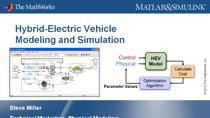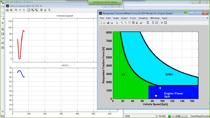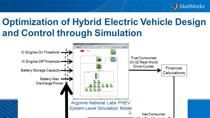Fuel Cell Electric Vehicle (FCEV) Architecture
Learn how Simulink®, Simscape™, and Powertrain Blockset™ are used to develop a fuel cell electric vehicle (FCEV) architecture. Modeling and simulation are used to demonstrate how the fuel cell interacts with aspects of an electric vehicle, such as:
- Drive cycles and operation scenarios
- Electric motor, DC-DC converter, battery system, and drivetrain
- Supervisory and feedback control algorithms
Other aspects of the fuel cell operation are also covered, including how to:
- Determine instantaneous power demand
- Convert power demand into current demand
- Distribute current demand between the battery and fuel cell
- Translate current command into hydrogen/air flow commands
Published: 22 Jun 2022





